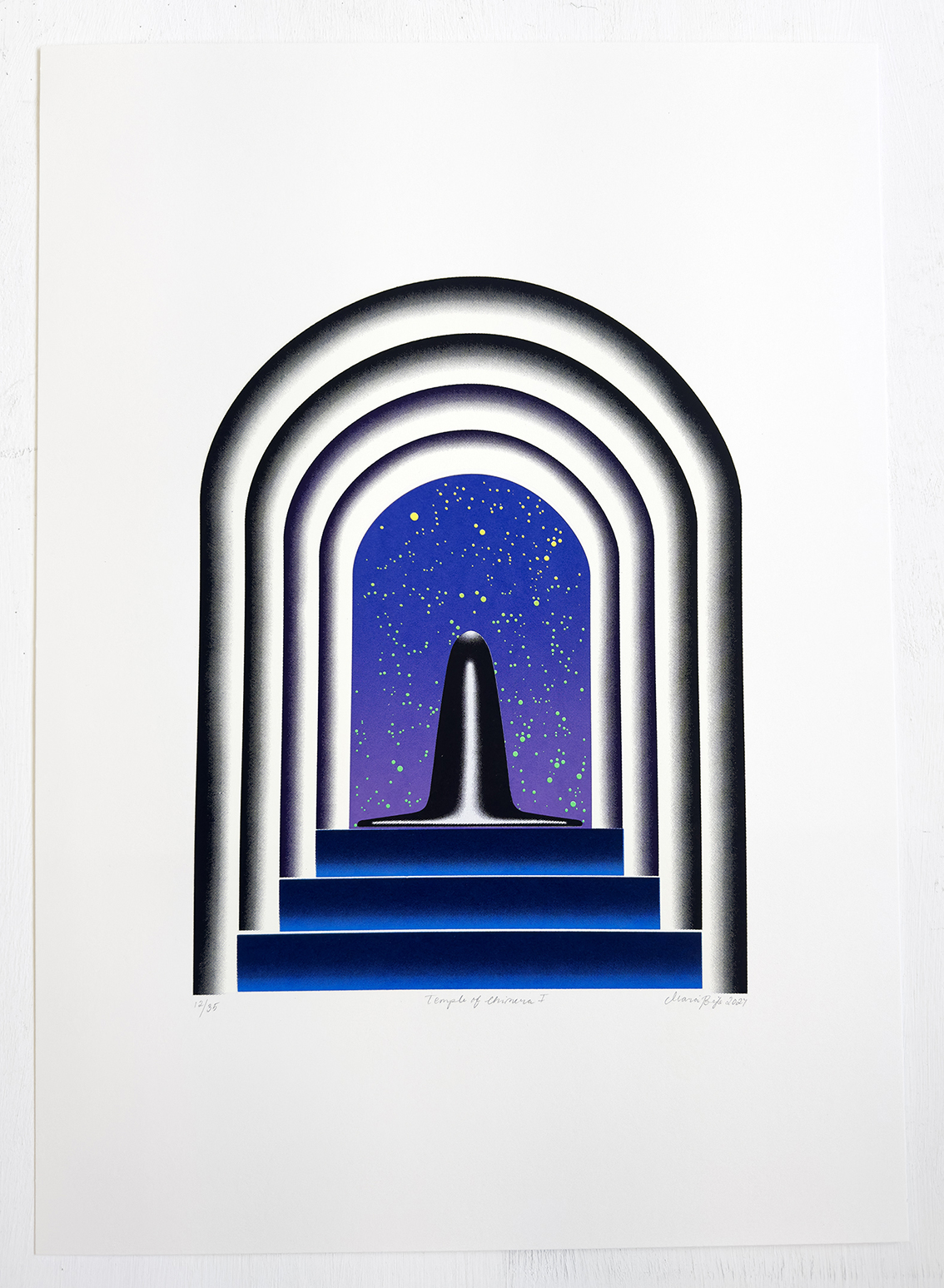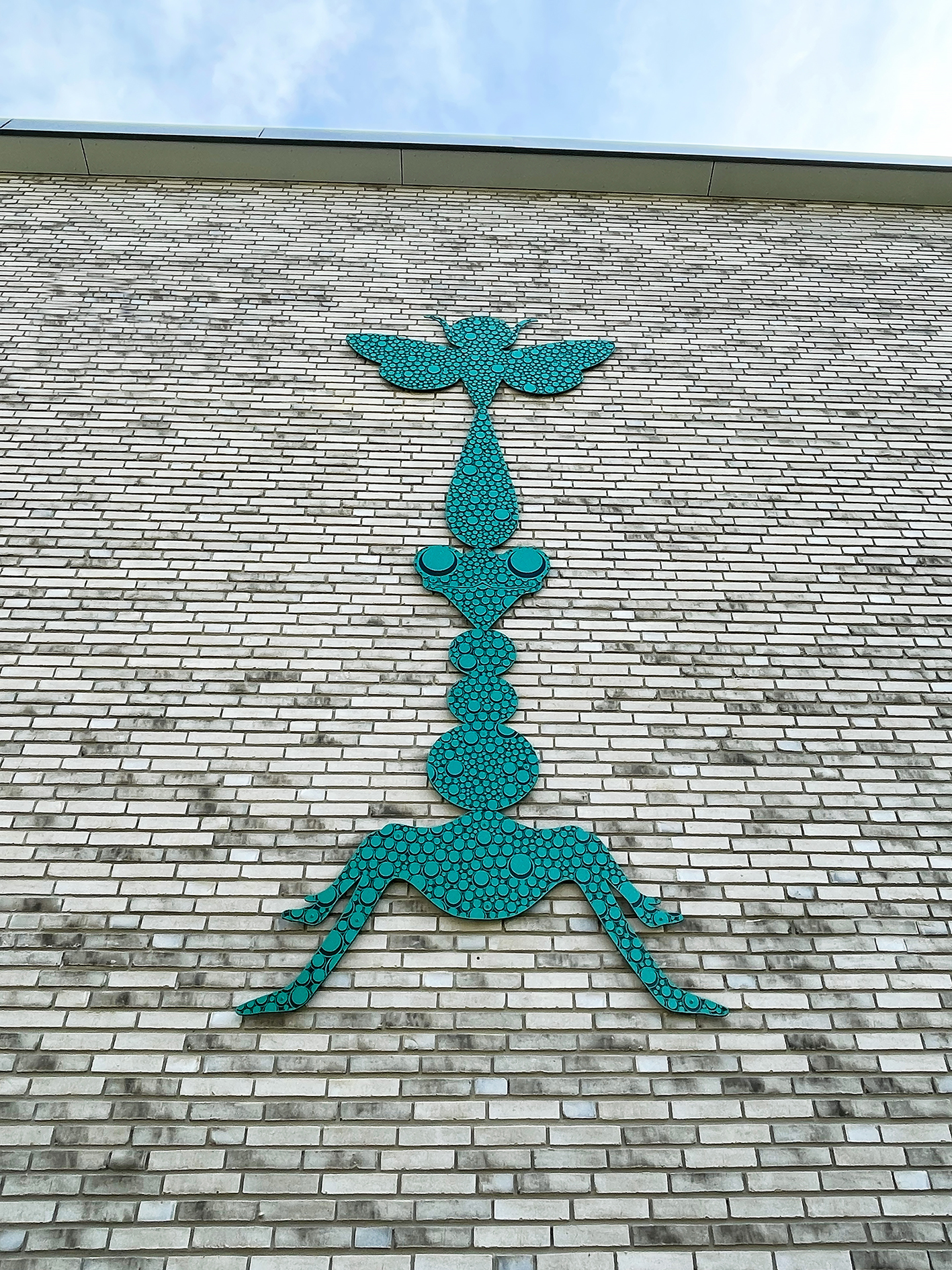















The heart of Maria Bajt’s practice is rooted in memory and experience of the world around her in which the commonplace becomes imbued with timeless narrative. While mythology and dreams feature prominently, a polymathic treasury of topics draws upon both measurable and subjective forms of knowledge combining to create Bajt’s artistic encyclopedia.
Employing disciplines as diverse as experimental film, science fiction, shamanism or anthropology, Bajt creates narratives that are immediately personal and relatable; as relevant in our contemporary world as they would be in Joseph Campbell’s monomyth operative metaphors not just for the artist but also the viewer. In places, organic forms hint at nature but a nature boldly reinterpreted and manifesting as swirling psychedelic bursts or a mystical dreamlike haze. In a manner akin to the ritualistic and repetitive mark making in early art, Bajt reuses patterns in her work - each adaptation heralding transformation and renewal. Universal archetypes, symbols and patterns, new but ancient, buried deep within our collective consciousness since the dawn of human kind are now excavated and brought to light.
In her practice, Bajt entices the viewer to cross a threshold into other worlds where reality is magically transformed, a parallel dimension where they are invited to sojourn. Her cave like installations create a womb like sense of enfoldment and comfort, reminiscent of
Marija Gimbutas’s feminist perspective on European pre-history and the mother goddess as the giver and container of all life. Within these caves, a physical metaphor for the unknown or the subconscious, the viewer finds themselves oscillating between Bajt’s worlds, small boxed universes, the overall installation in which they are immersed, and theveiled outside world, creating an uncanny multiplicity of existence where perceptions of time and place are distorted.
Humble media gains significance far greater than the sum of its parts. Small paper cuttings grow in confidence, with sculpture and pattern fracturing the confines of their black boxes, overflowing, escaping, whirl pooling and enveloping not just the entire space but also theviewer. Boundaries become blurred. Not only those between sculpture, object and painting but visitor is transformed into actor in Bajt’s mise-en-scène, participating in activating the space rather than observing at a remove. It is in these theaters that Bajt devises choreographies where shadows from mythology, folklore and prehistory mingle with the viewer to create a monomyth for the contemporary world.
Sheeena Malone, Berlin, 30.6.2017